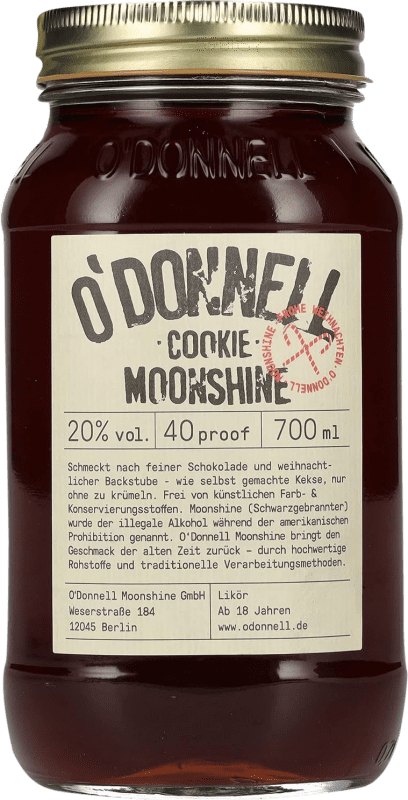Maestro Tejero La Cosa-The Thing Muscat Vino de la Tierra de Castilla y León Half Bottle 37 cl. Origin.
Producer.
Maestro Tejero (Bodega Alfredo Maestro Tejero).
Name.
Maestro Tejero La Cosa-The Thing.
Variety.
Country of origin.
Region of origin.
Appellation of origin.
 I.G.P. Vino de la Tierra de Castilla y León.
I.G.P. Vino de la Tierra de Castilla y León.
(UE)401/2010 Certification.
Indicación Geográfica Protegida (I.G.P.)
Vino de la Tierra (V.d.l.T.)
I.G.P. Vino de la Tierra de Castilla y León.
Production region.
The production region of I.G.P. Vino de la Tierra de Castilla y León is located in La región que, a grandes rasgos, coincide con la cuenca del Duero o submeseta norte, junto al perímetro montañoso que la rodea y situada en la comunidad autónoma de Castilla y León, España. Está formada por 317 localidades de las provincias de Ávila, Burgos, León, Palencia, Salamanca, Segovia, Soria, Valladolid y Zamora.
Weight.
700 gr.
Producer |
|
Name |
Maestro Tejero La Cosa-The Thing. |
Variety |
|
Country of origin |
|
Region of origin |
|
Appellation of origin |
|
(UE)401/2010 Certification |
Indicación Geográfica Protegida (I.G.P.) |
Production region |
The production region of I.G.P. Vino de la Tierra de Castilla y León is located in La región que, a grandes rasgos, coincide con la cuenca del Duero o submeseta norte, junto al perímetro montañoso que la rodea y situada en la comunidad autónoma de Castilla y León, España. Está formada por 317 localidades de las provincias de Ávila, Burgos, León, Palencia, Salamanca, Segovia, Soria, Valladolid y Zamora. |
Weight |
700 gr. |
Maestro Tejero La Cosa-The Thing Muscat Vino de la Tierra de Castilla y León Half Bottle 37 cl. Data sheet.
Typology.
Fortified wine.
I.G.P. Vino de la Tierra de Castilla y León.
Variety.
Vintage / Harvest.
Format.
Half Bottle.
Capacity.
37 cl.
Alcohol content.
11% Vol.
Weight.
700 gr.
Visual tasting note.
Golden reflections, Very intense, Mahogany tone, Very pale straw color.
Olfactory tasting note.
Blueberries, Floral touches, Notes of honey, Very expressive.
Tasting note.
Nuts, Fruity taste, Fig bread.
Recommended pairing.
Grilled vegetables, Cake shop, Caramelised walnuts.
Consumption temperature.
6ºC - 8ºC.
Consumption.
It is recommended to drink in moderation and demonstrate a responsible consumption of alcoholic beverages.
Special Format.
Medium Bottle.
Typology |
Fortified wine. |
Variety |
|
Vintage / Harvest |
Currently marketed by the producer. |
Format |
Half Bottle. |
Capacity |
37 cl. |
Alcohol content |
11% Vol. |
Weight |
700 gr. |
Visual tasting note |
Golden reflections, Very intense, Mahogany tone, Very pale straw color. |
Olfactory tasting note |
Blueberries, Floral touches, Notes of honey, Very expressive. |
Tasting note |
Nuts, Fruity taste, Fig bread. |
Recommended pairing |
Grilled vegetables, Cake shop, Caramelised walnuts. |
Consumption temperature |
6ºC - 8ºC. |
Consumption |
It is recommended to drink in moderation and demonstrate a responsible consumption of alcoholic beverages. |
Special Format |
Medium Bottle. |
Maestro Tejero La Cosa-The Thing Muscat Vino de la Tierra de Castilla y León Half Bottle 37 cl. Description.
Product reference.
WAN4570296
Accessories.
This product is provided in the conditions and format in which it is marketed at the current time. In cases where the product includes an additional packaging, box and/or case, These accessories will be included in the shipment as long as they comply with the dimensions of the special packaging adapted and approved for the transport of beverages.
In general, the images of the products that we publish on our website are only relevant for graphic purposes. The images do not show other accessories such as additional packaging (box, case, etc.) or promotional elements that may occasionally be included by the manufacturer along with the product. If you wish, we can inform you about the additional packaging, elements and accessories included with the product at the current time.
Weight.
700 gr.
Actual price.
9,95 € . This product is currently not available.
Storage position.
Lateral position, horizontal bottle.
Storage temperature.
Store at a constant temperature between 10-17ºC.
Humidity should be constant around 60-80%.
Recommendations.
Keep preferably away from light.
Product reference |
WAN4570296 |
Accessories |
This product is provided in the conditions and format in which it is marketed at the current time. In cases where the product includes an additional packaging, box and/or case, These accessories will be included in the shipment as long as they comply with the dimensions of the special packaging adapted and approved for the transport of beverages. |
Weight |
700 gr. |
Actual price |
9,95 € . This product is currently not available. |
Storage position |
Lateral position, horizontal bottle. |
Storage temperature |
Store at a constant temperature between 10-17ºC. |
Recommendations |
Keep preferably away from light. |
Maestro Tejero La Cosa-The Thing Muscat Vino de la Tierra de Castilla y León Half Bottle 37 cl. Legal notice.
Please keep in mind.
The information provided and referred to the product features and details has been provided by the expert, manufacturer or producer or published on the official sites. In no case can it be considered as assessment made by our team, unless expressly stated otherwise.
We suggest you to refer to the comments and reviews posted by our customers and users to expand and contrast this information.
Misreading.
Our team provides this information and details in ESPAÑOL language.
If you browse in another language note that the information contained may have been translated from the original language through an automated real-time process that has not been supervised by our human team.
In case of doubt, misunderstanding or misreading about the content of this information you should refer to the original version of this page or contact our customer service team.
Product image.
The product image or its label is only relevant for graphic purposes, so it may not match the identification of the vintage or other features and details of the product for sale. This product is provided in the conditions and format in which it is marketed at the current time.
This product is not identified or supplied in a specific vintage. The product image and label may not match the vintage identification or other characteristics and details of the product for sale.
Accessories.
This product is provided in the conditions and format in which it is marketed at the current time. In cases where the product includes an additional packaging, box and/or case, These accessories will be included in the shipment as long as they comply with the dimensions of the special packaging adapted and approved for the transport of beverages.
In general, the images of the products that we publish on our website are only relevant for graphic purposes. The images do not show other accessories such as additional packaging (box, case, etc.) or promotional elements that may occasionally be included by the manufacturer along with the product. If you wish, we can inform you about the additional packaging, elements and accessories included with the product at the current time.
Country of origin.
Spain. This product is shipped from Spain.
Legal Notice.
It is against the law to sell or supply alcohol to, or to obtain alcohol on behalf of a person under the age of 18 years.
If you are not more than 18 years old, you must leave this website.
Return policy.
Return policy.
Last update: Wednesday, 21 May 2025
For further information: Terms and conditions of the service.
Please keep in mind |
The information provided and referred to the product features and details has been provided by the expert, manufacturer or producer or published on the official sites. In no case can it be considered as assessment made by our team, unless expressly stated otherwise. |
Misreading |
Our team provides this information and details in ESPAÑOL language. |
Product image |
The product image or its label is only relevant for graphic purposes, so it may not match the identification of the vintage or other features and details of the product for sale. This product is provided in the conditions and format in which it is marketed at the current time. |
Accessories |
This product is provided in the conditions and format in which it is marketed at the current time. In cases where the product includes an additional packaging, box and/or case, These accessories will be included in the shipment as long as they comply with the dimensions of the special packaging adapted and approved for the transport of beverages. |
Country of origin |
Spain. This product is shipped from Spain. |
Legal Notice |
It is against the law to sell or supply alcohol to, or to obtain alcohol on behalf of a person under the age of 18 years. |
Return policy |
Return policy. |
No customer reviews at this time. Be the first to post a review!
Maestro Tejero by PrivateCeller.es
Bodega Alfredo Maestro Tejero: Brand.
 Español [ ES ]
Español [ ES ]Cambio de rumbo.
En el caso de Alfredo Maestro, dejó el mundo de las finanzas para inicarse en la elaboración de vinos. Corría el año 1998 cuando regresó a su Peñafiel natal, plantó sus primeras viñas y comenzó a informase a través de los viticultores y bodegueros de la localidad cómo se elaboraban los vinos. Su espíritu curioso le llevo a iniciar una formación autodidacta en temas de viticultura y enología, leyendo libros y sobre todo experimentando en sus elaboraciones. En la actualidad, Alfredo Maestro tiene en marcha distinto proyectos repartidos por toda la geografía castellano-leonesa, y también uno en Chinchón, Madrid. Elabora casi siempre fuera de las constricciones que imponen las denominaciones de origen, desde la zona de Valtiendas (Duratón) a Cigales, Ávila o el sur de Madrid. Su filosofía de culto al viñedo y de respeto a las variedades autóctonas entronca con las corrientes biodinámicas de cultivo que Alfredo Maestro practica en su viticultura.
Maestro Tejero La Cosa-The Thing Muscat Vino de la Tierra de Castilla y León Half Bottle 37 cl.
Additional information.
«Maestro Tejero La Cosa-The Thing Vino de la Tierra de Castilla y León» is produced by Maestro Tejero (Bodega Alfredo Maestro Tejero). «Maestro Tejero La Cosa-The Thing Vino de la Tierra de Castilla y León» is monovarietal, made only with the grape variety Muscat, 100% Muscat. «Maestro Tejero La Cosa-The Thing Vino de la Tierra de Castilla y León» is a product from Spain. The production region of «Maestro Tejero La Cosa-The Thing Vino de la Tierra de Castilla y León» is Castilla y León. It is certified with I.G.P. Vino de la Tierra de Castilla y León. The production region of I.G.P. Vino de la Tierra de Castilla y León is located in La región que, a grandes rasgos, coincide con la cuenca del Duero o submeseta norte, junto al perímetro montañoso que la rodea y situada en la comunidad autónoma de Castilla y León, España. Está formada por 317 localidades de las provincias de Ávila, Burgos, León, Palencia, Salamanca, Segovia, Soria, Valladolid y Zamora. The weight of «Maestro Tejero La Cosa-The Thing Vino de la Tierra de Castilla y León» is 700 grams.
«Maestro Tejero La Cosa-The Thing Vino de la Tierra de Castilla y León» belongs to the Fortified wine category, Fortified wine Appellation of origin I.G.P. Vino de la Tierra de Castilla y León. «Maestro Tejero La Cosa-The Thing Vino de la Tierra de Castilla y León» is monovarietal, made only with the grape variety Muscat, 100% Muscat. This product is not identified or supplied in a specific vintage. The product image and label may not match the vintage identification or other characteristics and details of the product for sale. If you wish, we can provide you with this information, and, of course, You can request a specific vintage and we will try our best to satisfy you. «Maestro Tejero La Cosa-The Thing Vino de la Tierra de Castilla y León» is marketed in half bottle 37 cl format. The alcohol content of «Maestro Tejero La Cosa-The Thing Vino de la Tierra de Castilla y León» is 11% Vol. The weight of «Maestro Tejero La Cosa-The Thing Vino de la Tierra de Castilla y León» is 700 grams. Regarding the tasting of «Maestro Tejero La Cosa-The Thing Vino de la Tierra de Castilla y León», the notes golden reflections, very intense, mahogany tone and very pale straw color stand out in its visual phase. Among the predominant notes of the olfactory tasting are blueberries, floral touches, notes of honey and very expressive. Finally, The tasting of «Maestro Tejero La Cosa-The Thing Vino de la Tierra de Castilla y León» in the taste phase stands out with nuts, fruity taste and fig bread. It is recommended to pair «Maestro Tejero La Cosa-The Thing Vino de la Tierra de Castilla y León» with grilled vegetables, cake shop and caramelised walnuts. The optimum temperature to consume «Maestro Tejero La Cosa-The Thing Vino de la Tierra de Castilla y León» is 6ºC - 8ºC.
The weight of «Maestro Tejero La Cosa-The Thing Vino de la Tierra de Castilla y León» is 700 grams. The final sale price of «Maestro Tejero La Cosa-The Thing Vino de la Tierra de Castilla y León» is 9,95 € in PrivateCeller.es. Temporarily «Maestro Tejero La Cosa-The Thing Vino de la Tierra de Castilla y León» is not available for sale on PrivateCeller.es.
The information provided and referred to the product features and details has been provided by the expert, manufacturer or producer or published on the official sites. In no case can it be considered as assessment made by our team, unless expressly stated otherwise. We suggest you to refer to the comments and reviews posted by our customers and users to expand and contrast this information. The product image or its label is only relevant for graphic purposes, so it may not match the identification of the vintage or other features and details of the product for sale. This product is provided in the conditions and format in which it is marketed at the current time. Spain. This product is shipped from Spain.
Appellation of origin:
I.G.P. Vino de la Tierra de Castilla y León.
Maestro Tejero La Cosa-The Thing Muscat Vino de la Tierra de Castilla y León Half Bottle 37 cl.
 Español [ ES ]
Español [ ES ]IGP Castilla y León.
La comunidad autónoma de Castilla y León, que cuenta con 10 Denominaciones de Origen Protegidas es, sin lugar a duda, una tierra vitivinícola, con buenos vinos, vinos excepcionales. Con la creación el 15 de Marzo de 2005 de IGP Vino de la Tierra de Castilla y León se cubre totalmente el territorio de la comunidad, tanto las zonas no englobadas en las D.O. como las que si lo están. Para las bodegas de estas últimas es una oportunidad excelente para elaborar o experimentar, bajo un marco jurídico más flexible que las reglas de las D.O., en ocasiones muy encorsetadas, y para bodegas de zonas sin D.O., en ocasiones por unos pocos centenares de metros, es una estupenda posibilidad de comercializar sus caldos con el apoyo de una IGP que ya nació con prestigio. Las uvas blancas de esta IGP son albarín blanco, albillo, chardonnay, chelva, doña blanca, gewürztraminer, godello, malvasía, moscatel de grano menudo, palomino, sauvignon blanc, verdejo y viura. Las uvas tintas que se utilizan para esta zona son la cabernet sauvignon, garnacha roja, garnacha tintorera, garnacha tinta, graciano, Juan García, malbec, mencia, merlot, negral, petit verdot, pinot noir, prieto picudo, rufete, syrah, tempranillo y tinta de toro. La zona de producción de los vinos amparados por la IGP «Vino de la Tierra de Castilla y León» está formada por la totalidad de los municipios de la Comunidad Autónoma de Castilla y León. Las condiciones naturales de la región, aparte de presentar una gran diversidad (no debe olvidarse que Castilla y León tiene una superficie de 94.000 Km2, siendo una de las regiones más extensas de Europa), han supuesto a lo largo de los siglos un factor limitante, más que una oportunidad, al desarrollo de las distintas actividades humanas en general y, en particular, de la actividad agraria por lo duro y extremo del clima.
La climatología.
El Clima en Castilla y León presenta características intermedias entre continental y mediterráneo, con una temperatura media de 17,5°, con mínimas por debajo de 0° y máximas rozando los 40°. El periodo de heladas va desde octubre a mayo, con heladas tardías que, con cierta frecuencia, dañan los viñedos. El clima predominante en Castilla y León es, por tanto, de tipo Mediterráneo semiárido continental, caracterizado por unos inviernos largos y fríos y unos veranos cortos, cálidos y secos, por un régimen de precipitaciones escasas y desigualmente repartidas a lo largo del año, así como por el extenso periodo de heladas, con frecuentes heladas tardías y marcadas oscilaciones térmicas entre el verano y el invierno y entre el día y la noche. Edafológicamente Castilla y León es una gran cuenca rellena por materiales terciarios propios del Mioceno (conglomerados, arcillas, arenas y margas). En ciertos puntos estos aparecen protegidos por otros materiales más resistentes a la erosión, dando lugar a los páramos, característicos de la paisaje regional. Además, están los ríos, que conforman vegas y terrazas y las afloraciones del zócalo paleozóico en la parte occidental de la Región. Todo ello termina por componer las unidades morfológicas de Castilla y León. La Depresión del Duero que es esa gran cuenca central, es la que mayor interés agrícola tiene.
Los suelos.
Los suelos de Castilla y León, por ser una región tan extensa, varían bastante en función de zona. En las zonas montañolsas, a más de 1.000m sobre el nivel del mar, los horizontes son cambisoles húmicos, buenos para el aprovechamiento forestal y ganadero. Las zonas de penillanura, que son las zonas donde los ríos van encajados y su valles, presentan suelos de carácter ácido, que se sitúan en la parte Oeste y Suroeste de la Región. Dan lugar a ecosistemas adehesados y finalmente, la Depresión del Duero, que es la zona agrícola por excelencia, presenta varios tipos de suelos. Zonas de transición, con suelos ácidos formados por materiales del cuaternario antiguo, situadas en el Oeste. Páramos, que se caracterizan por presentar suelos básicos, calizos, con buenas propiedades físicas y químicas, poco profundos y con elevada pedregosidad con buenas condiciones para el cultivo de cereales. Por otro lado están las campiñas, que se caracterizan por presentar suelos con perfiles poco diferenciados, estructura poco estable, pobres en materia orgánica, con texturas francas, franco-arcillosas (al norte del Duero, en la zona de Tierra de Campos) o arenosas, franco-arenosas (al Sur del Duero, La Moraña, la Comarca de Peñaranda…) que son aptas para cultivo de cereales en secano. Y en último lugar las vegas, con suelos aluviales, que pueden llegar a ser muy fértiles en función del clima y de la disponibilidad de regadío, siendo en la Depresión del Duero, también en la zona de transición, donde están situadas las principales zonas vitivinícolas.
Vinos de calidad.
La singularidad de los vinos blancos y rosados es debida fundamentalmente a las cualidades aportadas por las variedades más representativas de Castilla y León, como la Verdejo, la Godello, la Prieto Picudo y su gran adaptación al medio y, por supuesto, a la intervención humana que ha aplicado la más moderna tecnología para la consecución de un producto de alta calidad. Por su parte, los vinos tintos deben sus características, en gran medida, al equilibrado proceso de maduración de las uvas que permite el duro clima castellano y leonés. Las temperaturas altas al final del ciclo, pero, especialmente, la diferencia de temperaturas entre el día y la noche, que tiene lugar en la meseta castellana durante los meses de agosto y septiembre, permiten una maduración fenólica óptima para la elaboración de vinos de guarda. Los vinos espumosos han permitido aprovechar el potencial de algunas de las variedades autóctonas de Castilla y León (Godello, Verdejo, Prieto Picudo) para hacer este tipo de vino y presentar rasgos diferenciales con espumosos de otras zonas. Finalmente, los vinos de licor y de uva sobremadura, son claramente una concesión a la tradición, pues se han elaborado en Castilla y León desde antiguo.
Notas de cata.
Los vinos blancos jóvenes son frescos y afrutados, con gran presencia en boca, lo que les diferencia, de una manera especial, de los vinos blancos jóvenes que se elaboran en otras regiones. Los rosados, especialmente los que se elaboran en las zonas tradicionales para este tipo de vino, son frescos, con aromas a frutas rojas y con un agradable paso de boca. Si son de Prieto Picudo, resultan muy especiales, con un importante cuerpo y recuerdo frutal en la vía retronasal y, también la aguja que conservan algunos, les da un toque especial. Los vinos tintos son potentes, con aromas a fruta madura, gran carga de materia colorante, buena estructura y gran capacidad para crianzas largas. Los vinos espumosos, aunque se han empezado a elaborar más recientemente, resultan frescos, delicados y con un perfil aromático complejo marcado por la variedad y las notas propias de la crianza con las lías. Los vinos de aguja corresponden a una elaboración muy tradicional en algunas zonas de Castilla y León. Suelen ser vinos rosados, con mayor intensidad de color, frescos, gran viveza, acentuada por la aguja y mayor estructura en boca. Por último, los vinos de licor y de uva sobremadura son vinos con grado alcohólico elevado, procedentes de uvas muy maduras o sobremaduradas, aromas complejos, con rasgos de crianzas oxidativas, en muchos casos. Sus características recuerdan a las elaboraciones tradicionales de Andalucía Occidental.
Fortified wine I.G.P. Vino de la Tierra de Castilla y León
Product Selection Fortified wine I.G.P. Vino de la Tierra de Castilla y León.
Maestro Tejero La Cosa-The Thing Muscat Vino de la Tierra de Castilla y León Half Bottle 37 cl.
Variety:
Muscat.
Maestro Tejero La Cosa-The Thing Muscat Vino de la Tierra de Castilla y León Half Bottle 37 cl.
 Español [ ES ]
Español [ ES ]Origen.
Hay teorías que remontan el origen de los ancestros de la moscatel en el antiguo Egipto y en los comienzos de la antigua Persia (c. 3000-1000 a. C.), aunque algunos ampelógrafos, como Pierre Galet, creen que la familia de la variedad moscatel fue propagada durante el periodo de la antigüedad clásica (c. 800 a.C. a 600 a. C.) por griegos y romanos. Sin embargo, aunque que la producción doméstica de vino tiene una larga historia en el antiguo Egipto y en Persia y a que los escritores clásicos como Columella y Plinio el Viejo describieron como moscatel a variedades como la anathelicon moschaton y apianae, diciendo que eran muy dulces y atractivas para las abejas (en latín apis), no hay evidencias históricas sólidas de que esas antiguas uvas de vino fueran miembros de la familia moscatel.
Características.
La familia moscatel es muy numerosa, con más de 200 miembros distintos,sin embargo, a pesar de esta diversidad solo un puñado de variedades de uva moscatel son ampliamente utilizadas en la producción de vino. Entre ellas está la moscatel de grano menudo, la moscatel de Alejandría, la moscatel de Hamburgo y la muscat ottonel. Las cepas de variedad moscatel son poco vigorosas y de porte erguido, desborre medio y maduración más bien tardía, dando rendimientos bajos. Su maduración es variable, existiendo muchos racimos que retrasan esta maduración, especialmente si la producción es elevada, maduran en función de la ubicación y altimetría de la parcela donde estén plantadas. Los racimos son grandes, poco compactos y heterogéneo, tanto en tamaño de baya como en el color del hollejo. Las uvas son grandes de forma circular, pero con tendencia a sección longitudinal elíptica, con una pulpa blanda, muy jugosa, con sabor característico amoscatelado. Su hollejo es grueso y consistente. Si hay algo que caracteriza esta variedad, esto es, sin duda, su elevado grado de azúcar, al tiempo que su fuerte aroma frutal. Las cepas de moscatel requieren de temperaturas elevadas tras el enverado para poder alcanzar una maduración adecuada, resisten bien a la sequía y se adaptan perfectamente a distintos tipos de suelos. Las temperaturas bajas producen que su madera no agoste bien, adaptándose bien a podas cortas en vaso. Si las podas son largas puede provocar un exceso de producción lo que daría como consecuencia una reducción en la calidad perdiendo parte de su tipicidad y aromas. Es muy sensible al oídio y al mildiu, también al frío y sensible a la polilla del racimo, a los insectos y al frío.
Zonas de cultivo.
Es una cepa típicamente mediterránea, que precisa sol y la influencia del mar por lo que se cultiva sobre todo en países que cumplan con esa característica. Existen viñedos de uva moscatel en Austria, Chipre, España, Grecia, Italia, Malta y Portugal. En España su cultivo por excelencia es en Valencia, Alicante, Canarias y Málaga.
Vinos.
Los vinos de moscatel tienen una potente aromaticidad, dando lugar a buenos caldos en suelos calizos y excelentes en silícicos. Usada como uva de mesa por su sabor amoscatelado, pulpa firme y hollejo de espesor medio. Además de utilizarse como uva de mesa produce elegantes mistelas y buenos blancos secos, dulces y espumosos, todos ellos con aromas potentes, elegantes y florales. También se adicionan en coupages para aromatizar el conjunto. En Málaga se utiliza para elaborar vinos aromáticos.
Fortified wine Muscat
Product Selection Fortified wine Muscat.
Maestro Tejero La Cosa-The Thing Muscat Vino de la Tierra de Castilla y León Half Bottle 37 cl.
Data sheet.
Maestro Tejero La Cosa-The Thing Muscat Vino de la Tierra de Castilla y León Half Bottle 37 cl.
Fortified wine. Maestro Tejero. La Cosa-The Thing. I.G.P. Vino de la Tierra de Castilla y León. Castilla y León. Spain. Muscat. Half Bottle. 37 cl..
Variety.
Country of origin.
Region of origin.
Appellation of origin.
 I.G.P. Vino de la Tierra de Castilla y León.
I.G.P. Vino de la Tierra de Castilla y León.
Vintage / Harvest.
Format.
Half Bottle.
Capacity.
37 cl.
Alcohol content.
11% Vol.
Visual tasting note.
Golden reflections, Very intense, Mahogany tone, Very pale straw color.
Olfactory tasting note.
Blueberries, Floral touches, Notes of honey, Very expressive.
Tasting note.
Nuts, Fruity taste, Fig bread.
Recommended pairing.
Grilled vegetables, Cake shop, Caramelised walnuts.
Consumption temperature.
6ºC - 8ºC.
Special Format.
Medium Bottle.
Typology.
Fortified wine.
I.G.P. Vino de la Tierra de Castilla y León.
Producer.
Maestro Tejero (Bodega Alfredo Maestro Tejero).
Name.
Maestro Tejero La Cosa-The Thing.
Weight.
700 gr.
Product reference.
WAN4570296
Actual price.
9,95 € . This product is currently not available.
Please keep in mind.
The information provided and referred to the product features and details has been provided by the expert, manufacturer or producer or published on the official sites. In no case can it be considered as assessment made by our team, unless expressly stated otherwise.
We suggest you to refer to the comments and reviews posted by our customers and users to expand and contrast this information.
Misreading.
Our team provides this information and details in ESPAÑOL language.
If you browse in another language note that the information contained may have been translated from the original language through an automated real-time process that has not been supervised by our human team.
In case of doubt, misunderstanding or misreading about the content of this information you should refer to the original version of this page or contact our customer service team.
Product image.
The product image or its label is only relevant for graphic purposes, so it may not match the identification of the vintage or other features and details of the product for sale. This product is provided in the conditions and format in which it is marketed at the current time.
This product is not identified or supplied in a specific vintage. The product image and label may not match the vintage identification or other characteristics and details of the product for sale.
Return policy.
Return policy.
Last update: Wednesday, 21 May 2025
For further information: Terms and conditions of the service.
Country of origin.
Spain. This product is shipped from Spain.
(UE)401/2010 Certification.
Indicación Geográfica Protegida (I.G.P.)
Vino de la Tierra (V.d.l.T.)
I.G.P. Vino de la Tierra de Castilla y León.
Production region.
The production region of I.G.P. Vino de la Tierra de Castilla y León is located in La región que, a grandes rasgos, coincide con la cuenca del Duero o submeseta norte, junto al perímetro montañoso que la rodea y situada en la comunidad autónoma de Castilla y León, España. Está formada por 317 localidades de las provincias de Ávila, Burgos, León, Palencia, Salamanca, Segovia, Soria, Valladolid y Zamora.
Storage position.
Lateral position, horizontal bottle.
Storage temperature.
Store at a constant temperature between 10-17ºC.
Humidity should be constant around 60-80%.
Recommendations.
Keep preferably away from light.
Accessories.
This product is provided in the conditions and format in which it is marketed at the current time. In cases where the product includes an additional packaging, box and/or case, These accessories will be included in the shipment as long as they comply with the dimensions of the special packaging adapted and approved for the transport of beverages.
In general, the images of the products that we publish on our website are only relevant for graphic purposes. The images do not show other accessories such as additional packaging (box, case, etc.) or promotional elements that may occasionally be included by the manufacturer along with the product. If you wish, we can inform you about the additional packaging, elements and accessories included with the product at the current time.
Legal Notice.
It is against the law to sell or supply alcohol to, or to obtain alcohol on behalf of a person under the age of 18 years.
If you are not more than 18 years old, you must leave this website.
Consumption.
It is recommended to drink in moderation and demonstrate a responsible consumption of alcoholic beverages.
Variety |
|
Country of origin |
|
Region of origin |
|
Appellation of origin |
|
Vintage / Harvest |
Currently marketed by the producer.
|
Format |
Half Bottle. |
Capacity |
37 cl. |
Alcohol content |
11% Vol. |
Visual tasting note |
Golden reflections, Very intense, Mahogany tone, Very pale straw color. |
Olfactory tasting note |
Blueberries, Floral touches, Notes of honey, Very expressive. |
Tasting note |
Nuts, Fruity taste, Fig bread. |
Recommended pairing |
Grilled vegetables, Cake shop, Caramelised walnuts. |
Consumption temperature |
6ºC - 8ºC. |
Special Format |
Medium Bottle. |
Typology |
Fortified wine. |
Producer |
|
Name |
Maestro Tejero La Cosa-The Thing. |
Weight |
700 gr. |
Product reference |
WAN4570296 |
Actual price |
9,95 € . This product is currently not available. |
Please keep in mind |
The information provided and referred to the product features and details has been provided by the expert, manufacturer or producer or published on the official sites. In no case can it be considered as assessment made by our team, unless expressly stated otherwise. |
Misreading |
Our team provides this information and details in ESPAÑOL language. |
Product image |
The product image or its label is only relevant for graphic purposes, so it may not match the identification of the vintage or other features and details of the product for sale. This product is provided in the conditions and format in which it is marketed at the current time. |
Return policy |
Return policy. |
Country of origin |
Spain. This product is shipped from Spain. |
(UE)401/2010 Certification |
Indicación Geográfica Protegida (I.G.P.) |
Production region |
The production region of I.G.P. Vino de la Tierra de Castilla y León is located in La región que, a grandes rasgos, coincide con la cuenca del Duero o submeseta norte, junto al perímetro montañoso que la rodea y situada en la comunidad autónoma de Castilla y León, España. Está formada por 317 localidades de las provincias de Ávila, Burgos, León, Palencia, Salamanca, Segovia, Soria, Valladolid y Zamora. |
Storage position |
Lateral position, horizontal bottle. |
Storage temperature |
Store at a constant temperature between 10-17ºC. |
Recommendations |
Keep preferably away from light. |
Accessories |
This product is provided in the conditions and format in which it is marketed at the current time. In cases where the product includes an additional packaging, box and/or case, These accessories will be included in the shipment as long as they comply with the dimensions of the special packaging adapted and approved for the transport of beverages. |
Legal Notice |
It is against the law to sell or supply alcohol to, or to obtain alcohol on behalf of a person under the age of 18 years. |
Consumption |
It is recommended to drink in moderation and demonstrate a responsible consumption of alcoholic beverages. |

 Italy
Italy France
France Argentina
Argentina United States
United States Australia
Australia Portugal
Portugal Chile
Chile New Zealand
New Zealand South Africa
South Africa





 Germany
Germany Austria
Austria




 Tokaj-Hegyalja
Tokaj-Hegyalja
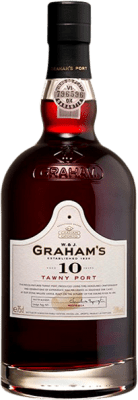








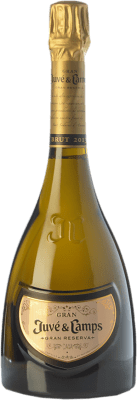
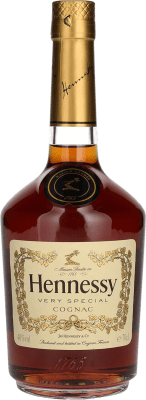


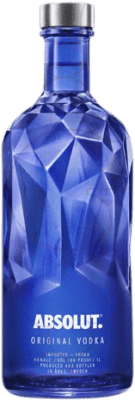


 Français
Français
 Deutsch
Deutsch
 Italiano
Italiano
 Português
Português
 中文
中文
 Русский
Русский
 日本語
日本語
 Belgium
Belgium
 Bulgaria
Bulgaria
 Croatia
Croatia
 Cyprus
Cyprus
 Czech Republic
Czech Republic
 Denmark
Denmark
 Estonia
Estonia
 Finland
Finland
 Greece
Greece
 Ireland
Ireland
 Latvia
Latvia
 Liechtenstein
Liechtenstein
 Lithuania
Lithuania
 Luxembourg
Luxembourg
 Monaco
Monaco
 Netherlands
Netherlands
 Norway
Norway
 Poland
Poland
 Romania
Romania
 San Marino
San Marino
 Slovakia
Slovakia
 Slovenia
Slovenia
 Spain, Balearic Islands
Spain, Balearic Islands
 Spain, Canary Islands
Spain, Canary Islands
 Sweden
Sweden
 Switzerland
Switzerland
 United Kingdom
United Kingdom


 EUR, Final price!
EUR, Final price!





